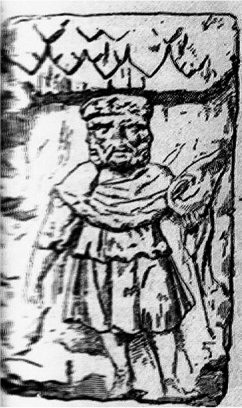Celtic MythologyThe Tuatha De Danann |
Who were the Tuatha de Danann? |
There are indications that the Tuatha de Danann, although technically mortal in The Book of Invasions, were in pre-Celtic Ireland considered to be divine. Their name, meaning “People of Danu” indicates a connection with Danu or Ana, a version of an ancient Indo-European mother goddess. We know little about Danu, but assume she would have been primarily a fertility goddess associated with the general well-being of Ireland. Da Chich Annan (“Paps of Ana”) is the common name of two hills in County Kerry near Killarney.
Descendants of the Nemidians, the Tuatha de Danann, had achieved at least semi-divine status by the time they reached Ireland in The Book of Invasions. Having apparently learned druidic magic and achieved extraordinary powers, they arrived in Ireland in a cloud and landed on a mountain in Connaught. The writer of Invasions says it was not known whether they were “of heaven or of earth.”
Several of the Tuatha had cognates in the pantheon of the Continental Celts. The Irish Lugh was a form of Caesar’s Mercury, containing within himself the Indo-European tripartite powers of the arts, of warfare, and of priestliness. Caesar’s Apollo here is Aonghus, the trickster-like son of the All-Father Dagda, or simply “the Dagda,” the supreme druid, the “Good God.” The continental Minerva is Dagda’s daughter Brigid, a healer who would later be assimilated as a Christian vestal-virgin-like saint. The Vulcan of Romano-Gaul is Goibhniu in Ireland. The Underworld god, Dis Pater in Gaul, is the mysterious Donn in Ireland. Ogma is a Hercules figure. An important Tuatha healer is the powerful Dian Cecht, who plays a significant role in what are known as the Battles of Mag Tuired.

The Irish god Lugh, depicted in this engraving based on a bas-relief found in Paris, was a form of Caesar’s Mercury, containing within himself the Indo-European tripartite powers of the arts, of warfare, and of priestliness.
